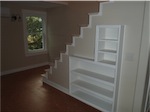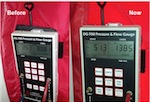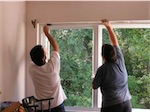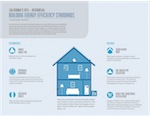Increasingly, because of either code changes or customer demand, builders are having to take a closer look at whether the new, tight houses they build have adequate ventilation. Many builders would like to provide something better than just a few bath exhaust fans but aren’t sure how to design a simple ventilation system that is reasonably priced and meets the needs of the homeowner.
Most whole-house ventilation systems rely on either exhaust fans or the fans in forced-air heating and air conditioning systems, because these fans are cheap, ubiquitous, and familiar to builders and homeowners. Yet just because these fans can be adapted for whole-house ventilation doesn’t mean they do the job well. In many areas of the country, supply ventilation systems or balanced heat-recovery ventilation systems make more sense than either exhaust ventilation or forced-air systems.
Building codes typically require that bathrooms be ventilated with either an operable window or a spot exhaust fan. The trend in recent years is toward whole-house mechanical ventilation. ASHRAE’s upcoming new residential ventilation standard (Standard 62.2) is likely to be incorporated by reference into many building codes within a few years (see Notebook, 6/00). Washington State has required mechanical ventilation in all new residential construction since 1991, and Minnesota instituted similar requirements this year.
Most builders, seeing the handwriting on the wall, realize that the trend is toward stricter requirements for mechanical ventilation.
The Purpose of a Ventilation System
The purpose of a whole-house ventilation system is to maintain indoor air quality, which means supplying people with fresh air – and, in some cases, lowering the indoor humidity level. Ventilation is accomplished by regularly exchanging indoor air with outdoor air. People perceive indoor air quality differently, but in general, complaints relate to odors, high humidity, and “stuffiness.” The key to an effective and efficient ventilation system is to remove indoor air from rooms where the majority of moisture and odors are generated (kitchen, laundry, and bathrooms) and reliably distribute outdoor air to all habitable rooms, particularly bedrooms, where people spend most of their time.
Sources of indoor air pollution. Besides the moisture and odors that people constantly generate as they breathe, bathe, and cook, there are other sources of indoor air pollution to consider. Volatile organic compounds (VOCs) are emitted by some building materials and furnishings, including engineered wood (such as plywood, OSB, and particleboard), carpet, paint, vinyl, and synthetic fabrics. Odors from these materials, which are strongest when they are new, may subside after a few weeks or months, but they can continue to outgas for much longer. By far the best way to control these pollutants, besides keeping them out of the house in the first place, is to ventilate continuously (nonstop) at a low rate.
Other sources of indoor air pollution vary, depending on occupant activities and lifestyle. These include chemicals in cosmetics, clothing, and household cleaning products. When designing a ventilation system, consider whether the occupants smoke, entertain frequently, have indoor pets, or engage in hobbies requiring chemicals. To deal with such pollutants, consider providing a higher level of continuous ventilation, additional spot exhaust fans, or a second, higher ventilation speed.
The most dangerous air pollutants are those that should never be allowed indoors – radon and most combustion gases. Combustion gases from water heaters, furnaces, boilers, fireplaces, and automobiles can all include carbon monoxide. A ventilation system cannot protect occupants from these pollutants. In fact, a poorly designed ventilation system can actually bring these pollutants into the house.
Qualities of a Good Ventilation System
Homeowners should be informed about their ventilation system but should not be aware of it in their daily lives. If the ventilation system makes noise, creates drafts, or raises the electric bill, people will disable it, in which case indoor air quality may deteriorate and lead to more serious problems. To avoid that, you want to install ventilation systems that are quiet, continuous, and automatic.







